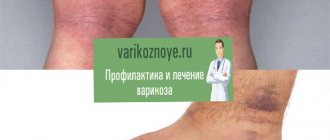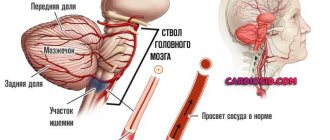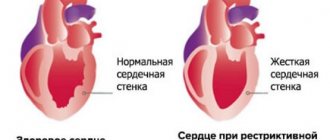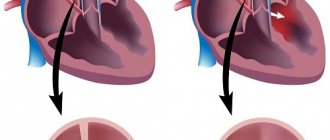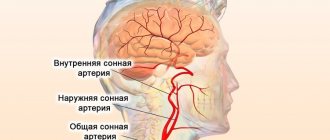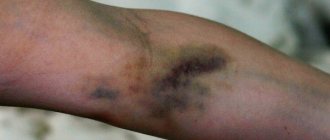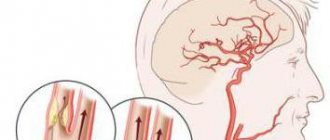The range of conditions that lead to fragility of blood vessels is truly wide. Therefore, when diagnosing a disease, it is important not only to indicate the fact of damage to the vascular wall, but also to find out what was the cause.
Many people periodically experience red, dotted rashes on the skin. They appear due to the leakage of a small amount of blood through the wall of small vessels - capillaries. If such changes are isolated, there is no need to sound the alarm. Periodic disruption of the integrity of the vessel wall can occur in absolutely healthy people. But if such dots cover almost the entire body and appear frequently, this may indicate fragility of the blood vessels. This article is exactly for such people.
Fragility of blood vessels: causes, diagnosis, treatment methods
Pathogenesis of the disease
Pathogenesis is the stage-by-stage development of a certain disease from the moment the pathological process starts until recovery. It is necessary to know it, as it simplifies the understanding of symptoms, diagnosis and treatment of pathology. The main mechanism of increased vascular fragility is a violation of the structure of the vascular wall. This may occur due to direct exposure to toxic substances, damage to the vessel by inflammatory mediators, changes in vascular tone due to excessive activation of the sympatho-adrenal mechanism.
Subscribe to our INSTAGRAM account!
This part of the nervous system comes into play during stress factors. An increased release of adrenaline leads to a narrowing of the lumen of the vessel and hypertonicity of its smooth muscles. Short-term activation of the sympathetic nervous system does not cause any problems, but prolonged activation ultimately leads to increased permeability of the vascular wall. That is why, with severe nervous shock, a person experiences fragility of blood vessels and pinpoint rashes appear.
Training exercises
Weak blood vessels can be treated not only with medications. To strengthen them, you can also use physical therapy, namely, exercises for training blood vessels. You can do them at home, after consulting with your doctor about contraindications. If there are none, then you can safely proceed to the treatment of blood vessels.
Cold and hot shower
One of the best methods of therapy is a contrast shower. Such vascular charging will be the most beneficial, since it causes the vessels to alternately contract and expand. This helps strengthen their walls. As a result, such vessels are less susceptible to surges in blood pressure. They are more durable, strong and elastic.
Take a contrast shower correctly, and after a while it will significantly improve your condition
Vascular training primarily involves comfortable conditions for patients suffering from vascular problems. This does not mean that patients should be exposed to icy streams of water, since this approach will cause more harm to the body from stress than good. Therefore, at the initial stage, a contrast shower is started at a temperature that is comfortable for a person.
During the first time of such douches, it is very easy to get used to the change in temperature of the water. Subsequently, the water is gradually made colder and colder so that there is a contrast with the hot water. Here are some tips on how to properly organize a contrast shower:
- Before the procedure, drink a glass of warm water. This simple method will help avoid a sharp rise in blood pressure and dizziness.
- Change the temperature gradually. There is no need to do heroic deeds and stand under icy water. This will only bring negative consequences for the body.
- Start your shower with warm water, but not scalding. This will help dilate blood vessels and relax the body.
- Carry out cold washing, starting from the face, crown and neck.
- The ideal combination is three hot and cold washes, but you should always end the procedure with cold water.
- After completing the procedure, thoroughly rub your body with a terry towel. This will help activate blood circulation in the vessels and warm the body.
- To treat fragile blood vessels, you need to perform a contrast shower procedure at least once a day, but it is best to do it twice - in the morning and in the evening.
If a contrast shower is too unpleasant for patients, it can be replaced with contrast foot baths.
Turpentine baths
An excellent remedy for treating blood vessels are turpentine baths. The raw materials are obtained from pine resin, which has many beneficial properties. This raw material was used for vessels back in Ancient Egypt. The recipes have survived to this day. Researchers in the 30s last century, they proved that blood vessels dilate under the influence of turpentine baths, blood flow is activated in them, and the coronary vessels supply the heart much better, which reduces the risk of vascular pathologies.
In a group of people who participated in the study, the risk of heart attack decreased by 30 percent, blood circulation was restored in difficult areas, heart rate normalized, and the heart muscle became stronger and more toned. This became possible thanks to the targeted action of the drug specifically on the cardiovascular system.
The main active component of turpentine is turpentine oil. It is this component that increases blood flow and promotes the dilation of blood vessels, resisting their fragility. You can buy turpentine at the pharmacy, and the dosage of the medicinal liquid must be found in the instructions.
The temperature of the bath water should not be higher than body temperature, i.e. up to 37 degrees. If the water cools down, it needs to be added after a while. The first time you take a turpentine bath can be limited to five minutes for getting used to, but in the future the time should be increased to half an hour, but no more. Before using the bath, you can consult your doctor.
Causes of the disease
The fragility of blood vessels appears not only with an increase in the tone of their walls, but also, conversely, with their flabbiness. This is a characteristic symptom of a lack of vitamins C and P, which are called ascorbic acid and rutin, respectively. In addition to hypovitaminosis, the following possible causes of vascular fragility:
- acute viral diseases (influenza, adenoviral infection);
- purulent sore throat;
- nephritis;
- autoimmune inflammatory processes (rheumatism, lupus erythematosus);
- vasculitis - inflammation of the vascular wall;
- diabetes;
- hypertonic disease;
- chronic stress, neuroses;
- septic condition;
- idiopathic thrombocytopenic purpura - reduced platelet count.
The range of conditions that lead to fragility of blood vessels is truly wide. Therefore, when diagnosing a disease, it is important not only to indicate the fact of damage to the vascular wall, but also to find out what was the cause. After all, the causes and treatment of vascular fragility in women and men have a direct relationship. To restore the structure of the vascular wall, it is necessary to eliminate the original process.
Symptoms of increased vascular fragility
The disease can manifest itself in completely different forms. It all depends on the severity of the problem. So, with severe fragility of blood vessels, nosebleeds occur. Women may even experience bleeding from the uterus. If the disease is mild, small spots appear on the body, the diameter of which is several millimeters.
Vessels perform a trophic, or nutritional, function. In addition, they take an active part in heat exchange. Therefore, with increased fragility of blood vessels in the legs, the patient feels constant cold in the area of the feet, even in the heat. The skin of the lower legs becomes dry and cracks appear on it. With advanced processes, ulcers appear that heal with difficulty.
Most often, symptoms appear during the cold season. There are several reasons for this.
- Firstly, in winter and spring a person suffers from a lack of vitamins due to cold, less time in the fresh air, and the lack of many vegetables and fruits.
- Secondly, cold air causes spasm of the vascular wall. And a prolonged spasm, as we have already found out, leads to vessel fragility and poor circulation.
Folk remedies
At home, you can also improve the functioning of the cardiovascular system. You can improve the health of blood vessels and capillaries with folk remedies in combination with gymnastics and proper nutrition. Walnuts, herbs, tinctures, and decoctions are used. There are simple and affordable recipes that quickly improve your overall well-being.
Walnuts
Walnuts help remove excess cholesterol, improve heart health, clean capillaries and improve mental activity. All parts of the nut are used for treatment, but the partitions are considered the most valuable. To eliminate the fragility of blood vessels, you need to take the partitions and add 250 ml of hawthorn. Leave for at least 2 weeks. Then separate the liquid from the partitions and drink 1 tsp. in a day.
Take after meals for 20 days. The nut contains omega-3 fatty acids, L-arginine, potassium, lecithin and phosphorus. To cleanse blood vessels in the legs and improve metabolic processes, it is used for 1-1.5 months.
Important information: How to perform balloon and coronary angioplasty of blood vessels (arteries) of the heart
Herbal tincture
Herbal tincture can prevent the development of atherosclerosis and improve the condition of the circulatory system. You will need equal amounts of ginseng, lemongrass herb, and rhodiola. Can be supplemented with nettle and yarrow herb. Pour a glass of alcohol or vodka and leave in a dark place for 2 weeks. To strengthen the veins and blood vessels in the legs, take 10-20 drops three times a day. The duration of the course is 1 month.
Parsley
Parsley contains essential oils, ascorbic and nicotinic acids, flavonoids, and mineral salts. The plant has a pleasant smell and taste. To prepare the healing mixture you will need 4 tbsp. herbs and 1 glass of hot water. Leave for 30-40 minutes. To improve the health of blood vessels using folk remedies, you need at least 1 month. You should take 3-4 tbsp regularly.
You can make compresses. To do this, a small piece of fabric is dipped in liquid and placed on the face, arms or legs. You need to do the procedure once a day for 2 months. You can make compresses 2 times a day for 30 days. Procedures that strengthen blood vessels are intended for long-term use.
Rose hip decoction
Rose hips contain vitamins and antioxidants that ensure the normal functioning of the hematopoietic system. Bad cholesterol and triglycerides are removed from the body, reducing the risk of heart attack and stroke. If a person has bad blood vessels, make a rosehip decoction. Rosehip berries must be poured with 1-2 cups of boiling water and left for 30 minutes. Take 1 glass with honey every day. They also make compresses that are placed on the eyes. To do this, pour boiling water over the berries and cook for 5-7 minutes. Dip a cotton pad into the cooled broth and place it on the eyes.
Yarrow juice
Yarrow juice can strengthen blood vessels in the legs. The leaves need to be washed and try to squeeze the juice out of them. The liquid is used to lubricate the legs. You can instill liquid into the nose to strengthen the capillaries - 1-2 drops in each nostril twice a day. In complex treatment, freshly squeezed juice is suitable, which is consumed orally. Recommended dosage: 1 tbsp. per day for 2 weeks.
Tincture of young chestnuts
You can improve the condition of blood vessels using folk remedies using tincture of young chestnuts. The composition contains mineral salts, microelements, dietary fiber, pectin, tannins. The tincture should be made from peeled green chestnuts. They are placed in a jar and filled with vodka. You need to insist for at least 10 days. Then strain and drink 1 tsp. Can be mixed with honey water for a more pleasant taste.
Collection of herbs
You can strengthen the blood vessels of the brain using folk remedies quickly and without unwanted reactions from the body. The following herbs will be needed in equal quantities:
- Sophora japonica;
- barberry;
- Red clover;
- cottonweed.
Important information: How to treat stenosis of the left (right) subclavian artery and what are the symptoms of the disease
Mix the herbs and pour 2 cups of boiling water. You need to simmer over low heat in a water bath for 7 minutes. Strain and drink 1 tbsp. per day. The duration of the course is 1 month.
Methods for determining increased fragility: tourniquet symptom
Violation of the structure of the vascular wall can be determined already at the first examination of the patient, without the use of laboratory and instrumental diagnostics.
There are several methods for identifying vascular fragility:
- pinch symptom;
- hammer sign;
- tourniquet symptom.
The last symptom in the list is used to determine the fragility of blood vessels in the hands. To do this, take the cuff that is included in the blood pressure measurement kit. Mentally divide the patient's shoulder into three parts and apply a cuff to the middle third with such force that it blocks the flow of blood in the veins, and the arterial flow is preserved. Veins are thinner vessels than arteries, so they are easier to clamp. Inflate the pressure in the cuff so that it is equal to diastolic. It is also possible to apply a regular tourniquet. In this case, it is enough to apply the cuff for 5 minutes, and the tourniquet for 10 minutes.
A symptom is considered positive if small and larger hemorrhagic rashes appear at the site of compression and beyond. They are called petechiae and ecchymoses, respectively. Most often, this reaction is observed in the following diseases:
- typhus;
- scarlet fever;
- idiopathic thrombocytopenic purpura;
- sepsis;
- flu.
Methods for determining increased fragility: pinch and hammer symptoms
The pinch symptom is performed on the skin of the front or side surface of the chest; it is most convenient and informative to do this in the space between the first and second ribs. The doctor takes a fold of skin with the index finger and thumb, so as to capture two to three millimeters. Next, the doctor moves the fold with two fingers in opposite directions. If vascular fragility occurs, a hemorrhagic spot appears on the skin.
To carry out the hammer test, you need a special percussion hammer. The doctor gently taps it on the surface of the sternum. If the symptom is positive, small red rashes appear on the sternum.
Additional diagnostic methods
The examination methods listed above help determine the presence of fragility of the vascular wall, but do not say anything about its origin. If the doctor, based on examination of the patient, collection of complaints and anamnesis, suspects the presence of a more serious pathology, he prescribes laboratory and instrumental methods.
Subscribe to our VIBER channel!
The most commonly used diagnostic methods are:
- general and biochemical blood test - to identify signs of inflammation of infectious or autoimmune origin;
- urine tests - if renal dysfunction is suspected;
- blood sugar test - to confirm or rule out diabetes;
- ultrasound examination - if necessary, examine the vessel wall;
- Ultrasound with Doppler - allows you to see the flow of blood through the vessel.
Pathogenesis
As a result of a violation of fat metabolism (increased concentration of low-density lipoproteins in the blood), deposits are formed on the walls of blood vessels - cholesterol plaques. Over time, they increase in size, become calcified, and then begin to pose a threat to life.
It is these formations that cause thromboembolism - blockage of vital vessels. Having come off from the place of attachment, such a plaque circulates with the blood flow and, subsequently entering a vessel of smaller diameter, blocks it. This is one of the causes of strokes and heart attacks.
Another is the formation of a massive plaque in the lumen of a large vessel without separation. Gradually blocking the blood flow, it contributes to organ ischemia (lack of blood supply). If we are talking about cerebral arteries, then the presence of cholesterol plaques provokes a deficiency of brain nutrition and, accordingly, its dysfunction.
Individual neurons die under conditions of oxygen deficiency, which is manifested by discirculatory encephalopathy. The extent of damage directly depends on the caliber of the vessel, the size of the plaque, and the possibility of developing a collateral vascular network.
Treatment of the disease: etiotropic
If, after additional examination methods, the doctor has made an accurate diagnosis, he will prescribe treatment for the cause of vascular fragility. For example, for autoimmune diseases, corticosteroids and cytostatics are used. These drugs suppress the immune response, thereby preventing the production of antibodies against one's own cells.
If the basis for increased fragility is an acute viral disease, the doctor may prescribe specific antiviral drugs. For example, Oseltamivir is effective for influenza. If the cause is a purulent process, antibacterial drugs are used.
For diabetes, a strict diet and the use of medications that lower blood sugar levels are important. With high blood pressure, it is necessary to correct it with the help of antihypertensive drugs.
What vascular diseases of the lower extremities exist?
Thrombosis and varicose veins are diseases of blood vessels located in the lower extremities. They are the most common in their category, because problems of this nature affect people of all ages and both sexes.
Thrombosis is a blockage of the ducts. Due to the formation of blood clots, the movement of blood through the system worsens. This disease in its later stages can lead to a complete lack of patency. The development of a methodology regarding how and what to treat the vessels of the legs depends not only on the disease itself, but also on the location of the problem. Depending on the location of the blood clot, the doctor selects treatment methods. Most often, these are complex actions that complement each other and together have an enhanced positive impact.
The second disease in this category is varicose veins. The problem is characterized by stagnation of venous blood, which contributes to the expansion and deformation of the walls of the ducts. How vessels are treated for this disease depends on the degree of neglect of the problem.
Treatment of the disease: symptomatic
In addition to eliminating the cause, symptomatic treatment is carried out. It is aimed at restoring the vessel wall and eliminating hemorrhagic rash.
The following groups of drugs are used:
- multivitamin complexes containing vitamins C and P;
- drugs that increase vascular tone and strengthen the wall of the blood vessel: “Ascorutin”, “Capilar”, “Rutozid”.
If large bruises are observed on the body that do not disappear after drug therapy, cosmetic intervention is possible:
- ozone therapy;
- sclerosis;
- laser photocoagulation;
- electrocoagulation.
Reviews claim that such methods show high efficiency.
